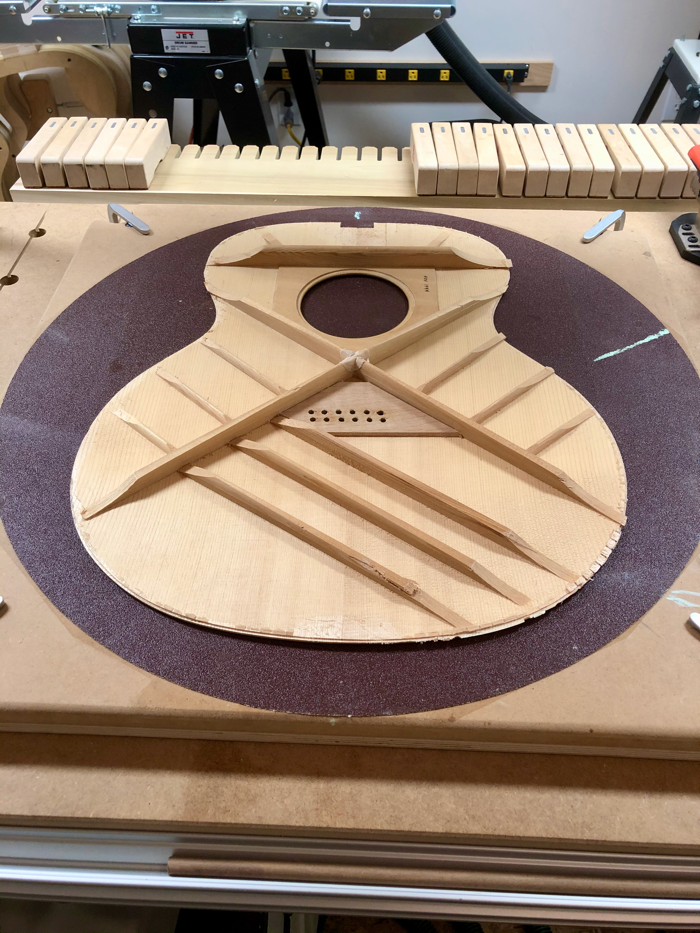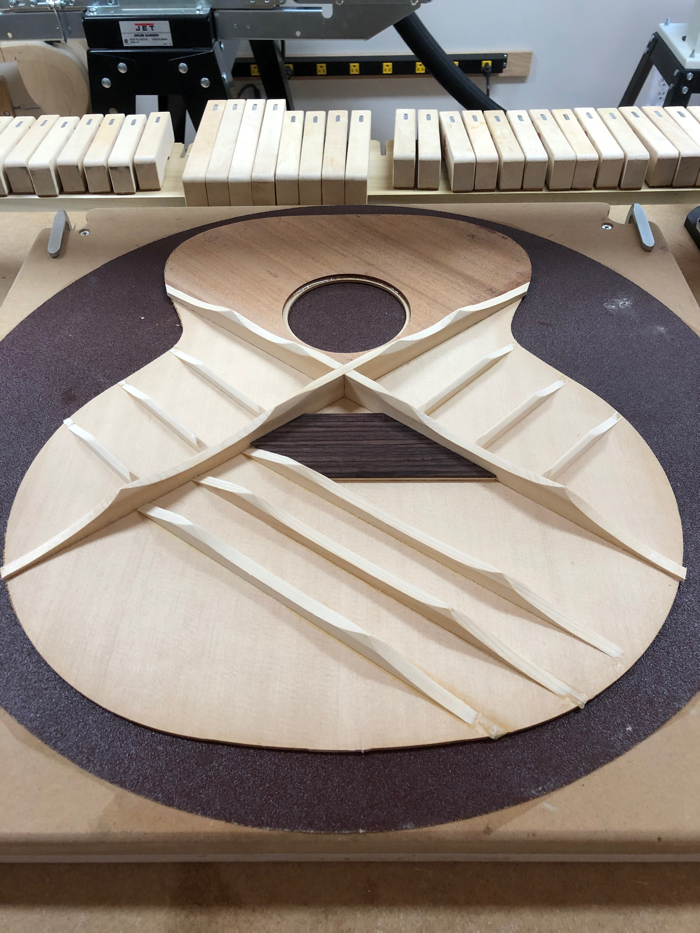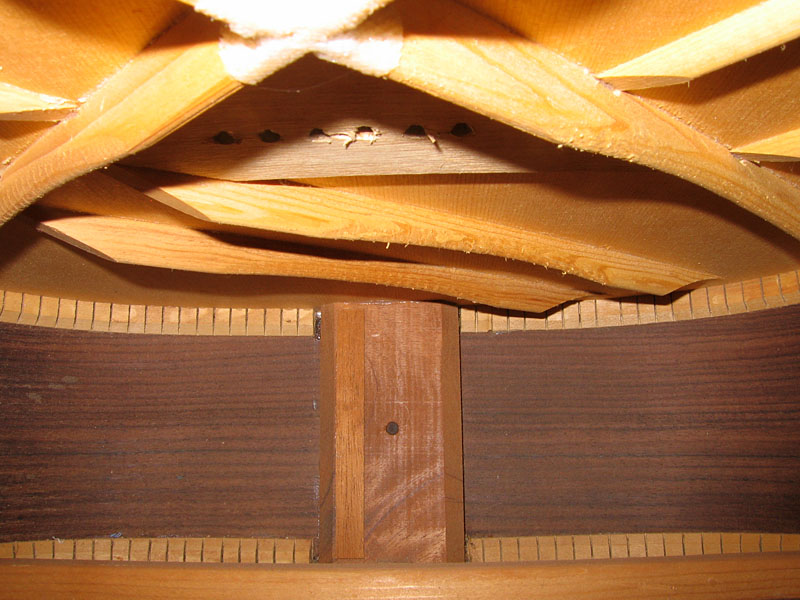Leo's word from another site:
Kottke: "I was at a guitar store in Clearwater, Florida, that had an adjacent theater where they booked people to play. Ken Spooner, who owned the place, brought a Taylor 12-string over to the hotel one day, and I liked it a lot, and bought it. I did what I frequently do with a 12-string: I took out my pocket knife and started carving on the braces. I didn’t do much of that, because I had learned by then that most of that impulse is pathology o my part.
Anyway, I used it for a little while, and somebody mentioned it to Bob, and I later learned that Bob wanted to talk to me about the guitar. He thought that my comments made some sense, and he was interested din building a variation on the guitar I’d bought. The bulk of the experimentation had to do with the bracing. I essentially wanted less wood than is common on a 12-string, and I also wanted it built to be tuned down, instead of to pitch. I don’t think a 12-string makes sense tuned to pitch. If you want that, I think you should play a mandolin. I think the real virtue of a 12-string is that it can just explode out of the bottom. So, that’s what we aimed for.."


